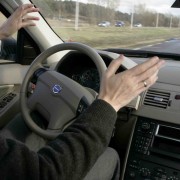U.K. Government: Driverless Cars Will Be Liable For Crashes, Not Drivers
Jennifer van der Kleut
One week after the Queen of England’s speech, in which she said new legislation will propel Britain to the forefront of driverless technology, roads minister Andrew Jones gave his own speech, outlining how liability for accidents in driverless cars will work.
In a nutshell, Jones said, the driverless cars themselves will be held responsible for crashes, not the humans who ride in them, v3 news website reports.
Jones explained that the U.K. government believes that cars will be fully autonomous with four years, with no need for human drivers or passengers to need to intervene at all. Therefore, there would be nothing for them to be held liable for.
“The government believes that within four years it will be possible to buy cars that, under supervision, park on their own and pilot themselves on motorways. Eventually, there will be virtually nothing left for the motorist to do,” v3 quoted Jones.
Naturally, Jones says this will completely transform how insurance works.
“Compulsory motor insurance will be retained, but it will be extended to cover product liability so that when a motorist has handed control to their vehicle, they can be reassured that their insurance will be there if anything goes wrong,” he said. “Where the vehicle is at fault the insurer will be able to seek reimbursement from the manufacturer.”
The Queen’s Speech outlined a new Modern Transport Bill, which aims to remove legislative red tape delaying the debut of driverless vehicles in Britain. The Queen said measures in the Modern Transport Bill would “ensure the U.K. is at the forefront of technology for new forms of transport, including autonomous and electric vehicles.”
Many experts say keeping Britain at the forefront will also be a boon for the nation’s economy. Paul Wilcox, Nissan’s European chief, says it could be a 900-billion-pound global industry by 2025, with Britain nabbing a big piece of that pie.
“Autonomously-equipped vehicles will [also] improve the safety and well-being of drivers, with fewer collisions and reduced traffic congestion,” he told The Telegraph.

